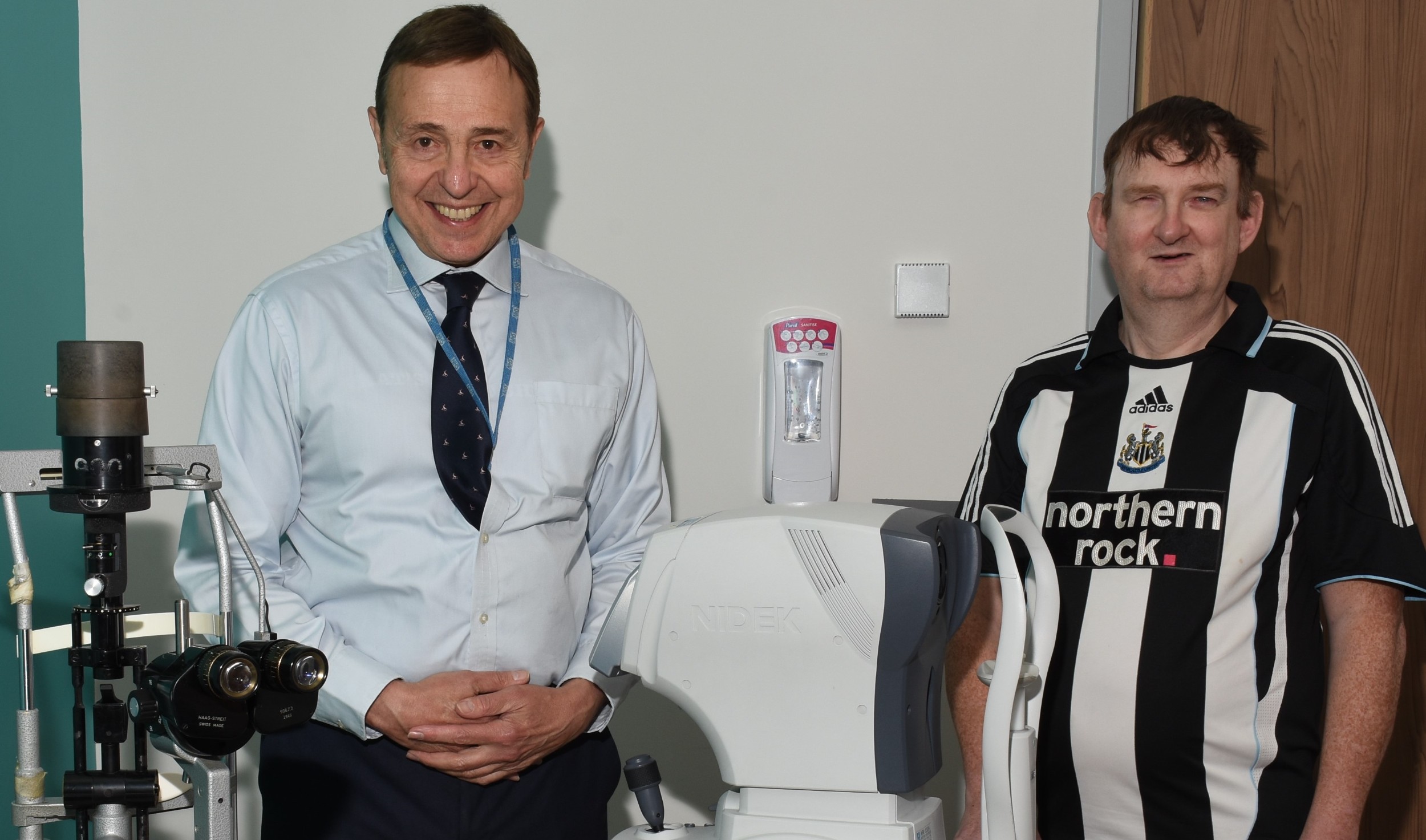A blind football fan who has undergone over 45 operations to save his sight has been able to watch his beloved football team pass a ball for the first time in three years, thanks to a team of surgeons in Liverpool.
55-year-old Steve Routh has a rare genetic disorder, Axenfeld-Rieger Syndrome (ARS), which mainly affects the development of the eye, and common symptoms include cornea and iris defects, and glaucoma.
He has been attending St Paul’s Eye Unit at the Royal Liverpool University Hospital for over 20 years, receiving multiple corneal transplants, glaucoma and retinal surgeries in a bid to maintain his sight. Due to his ARS, Steve’s corneal transplants deteriorate quicker than most, and in 2014, he also lost complete sight in his right eye as a result of a double retinal detachment – leaving him with only some usable sight in one eye.
However, Steve is now the latest recipient of pioneering Boston Keratoprosthesis (KPro) surgery, a specialist operation designed for people who have had two or more failed corneal transplants and poor vision.
The surgery on his left eye has enabled Steve, who lives in Thornaby-on-Tees near Middlesbrough with wife Amanda, to start to look forward to things he’s been missing out on – such as being able to watch Newcastle United play, or book a special holiday abroad to celebrate his 30th wedding anniversary.
Steve said: “I’d just been living with it, knowing that each graft or transplant will only last so long as that’s a factor of my condition, and I’d need to come back for another surgery. The way I described my vision was like being in a smoky room. It gets smokier and smokier until you can’t see.”
A corneal transplant replaces a diseased cornea (the clear window at the front of the eye) with healthy donor tissue to improve a patient’s sight. The corneal survival rate for a patient’s first transplant after five years is 72%, but reduces to 53% for the second transplant, 37% for the third and only 25% for the fourth. However, Steve’s statistics were even lower due in part to ARS, and only one of his many corneal transplants lasted up to 18 months.
Steve said: “My surgeons never gave up on me all these years. I knew my latest surgery was the ‘last chance saloon’ – as you can’t keep on regrafting and after losing sight in my right eye it made the success of this new pioneering surgery so important, as it contained a big risk of me losing what little sight I had in my left eye. But as the success rate of my transplants were deteriorating, I knew the risks associated with the KPro was worth taking.”
In April, Steve underwent the KPro surgery, performed by Professor Stephen Kaye, Consultant Ophthalmologist, and consultant surgeons, Teresa Sandinha and Hussam Muntasser, at the Royal. Professor Kaye transplanted an artificial cornea, made from acrylic plastic on top of a titanium back plate, in the middle of a human donor cornea, which was then stitched into place at the front of Steve’s eye. It has a clear central window, which restores sight and offers a greater chance of improved vision for a longer period.
Now 13 weeks post-surgery, Steve’s recovery has been very good and he’s optimistic that the KPro will give him longevity with a certain level of vision he can rely on. The couple have now booked what is their first holiday abroad in a very long time, and will be visiting the Dominican Republic to celebrate their 30th wedding anniversary.
Steve said: “The whole team at the Royal have been unbelievable. For the first time I feel confident in booking a trip abroad. I could never have done that before because of the danger in my cornea transplant rejecting or failing. After my operation in April, I was able to properly watch Newcastle United play – and it was the match where they qualified for next season’s Champions League for the first time in 20 years, which made it even more special!
“Before, I could only see blurry colour moving across my 75-inch TV screen from six foot away, so I would have to rely on the commentary and imagine what was happening in parts. Although it never stopped me cheering and singing along with the fans - my neighbours always knew when Newcastle were playing! But my sight has improved to such an extent that I can now make out the players and see the ball too.
“My next goal is to get back into my allotment that I have not been able to tender for years. I loved being there, growing all kinds of vegetables and the fresh air and sunshine is wonderful for my mental health.”
Professor Stephen Kaye, Consultant Ophthalmologist, said: “It’s been a privilege to look after Mr. Routh, who has never given up hope on us working to save his sight, and for other similar patients. Through the generous and altruistic act of eye donation we are able to give patients this much needed surgery to improve their quality of life and enable them to live their lives towards a level they had before their sight-loss.”
Steve, who said he had reached the “last chance saloon” with the vision in his left eye, speaks about the “game changing” procedure he had at the Royal Liverpool University Hospital.
